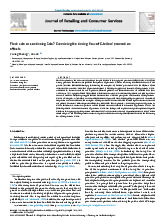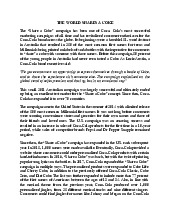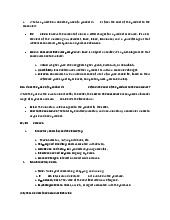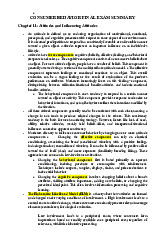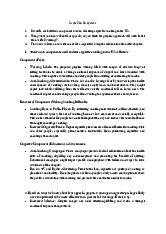



Preview text:
lOMoAR cPSD| 59078336
Chapter 2: Cross-Cultural Variations in Consumer Behavior
Global Expansion of a Fashion Brand
A well-known European fashion brand, ModaTrend, is planning to expand its
business into two new markets: Japan and Brazil. The company currently operates
successfully in Europe and North America, where consumers prioritize
individualism, performance-based rewards, and immediate gratification. However,
the company is concerned about cultural differences and how they might affect
consumer preferences and purchasing behaviors in the new markets.
Your task is to analyze cultural values in Japan and Brazil based on the concepts
from Chapter 2 and develop a marketing strategy that aligns with these values. Assignment Tasks:
Part 1: Cultural Analysis
1. Using the Other-Oriented, Environment-Oriented, and Self-Oriented Values,
compare and contrast Japan and Brazil in terms of: o Individualism vs.
Collectivism o Youth vs. Age preference o Masculine vs. Feminine roles o
Risk-Taking vs. Security o Sensual Gratification vs. Abstinence
o Postponed Gratification vs. Immediate Gratification
2. Provide examples of how these values impact consumer purchasing behaviors in each country.
Part 2: Marketing Strategy Adaptation
Based on your cultural analysis: 1. Product Strategy:
o Should the company modify its product offerings for Japan and Brazil?
o Should the brand emphasize luxury and exclusivity, affordability, or sustainability?
2.Advertising and Branding Strategy:
o How should ModaTrend communicate its brand in each market? lOMoAR cPSD| 59078336
o Should it focus on celebrity endorsements, tradition, family-oriented
themes, or individual success stories?
3. Pricing and Promotion Strategy:
o Should the brand use discount-based promotions or status-based premium pricing?
o What role does social media and influencer marketing play in these markets? 4. Distribution Strategy:
o Should the company rely on e-commerce, physical stores, or a
combination? o Are shopping habits different in Japan and Brazil?
Part 3: Ethical and Cultural Sensitivity
1. Identify potential cultural mistakes the company should avoid when entering these markets.
2. Discuss ethical considerations related to marketing in these countries, such as
stereotyping, gender representation, and sustainability. Chapter 8: Perception Questions
1. Define perception and explain its relationship with consumer memory and decision-making.
2. Differentiate between exposure, attention, and interpretation in consumer
perception. Provide real-world marketing examples for each.
3. Describe the role of selective exposure and voluntary exposure in advertising.
How can brandsencourage voluntary exposure?
4. Explain stimulus factors that influence attention in advertising. Which of these
factors do you think is most effective and why? lOMoAR cPSD| 59078336
5. Imagine you are a marketing manager for a new soft drink brand. You need to
create an advertisement that captures consumer attention.
a. Which stimulus factors (size, intensity, color, movement, contrast, expectations,
etc.) will you use to make your ad stand out?
b. How will you use positioning and isolation in the advertisement?
c. Provide a rough sketch or detailed description of your ad concept.
6. Explain subliminal perception and provide an example of a subliminal stimulus in advertising.
Do you think subliminal advertising is ethical? Why or why not?
7. Discuss how perception influences packaging design. Choose a real-life product
and analyze how its packaging uses color, size, and design to attract consumer attention.
Chapter 9: Learning, Memory, and Product Positioning
Select a product, store, or service of relevance to students on your campus. Using a
sample of students, measure its brand image. Develop a marketing strategy to improve its image.
Chapter 10: Motivation, Personality, and Emotion 1.
Define motivation and explain why it plays a crucial role in consumer behavior. 2.
Compare and contrast Maslow’s Hierarchy of Needs and McGuire’s
Psychological Motives. How do they explain consumer behavior differently? 3.
Give a real-life example of cognitive dissonance in consumer decision-
making and explain how a marketer might address it. 4.
Explain the concept of motivational conflict and provide an example for each
type (Approach-Approach, Approach-Avoidance, Avoidance-Avoidance). 5.
How can marketers use motivation theories to influence purchasing
decisions? Provide a specific example. lOMoAR cPSD| 59078336 6.
What is the Five-Factor Model of Personality? How can marketers use this
model to target consumers effectively? 7.
Differentiate between the single-trait approach and the multi-trait approach in
personality studies. Provide an example of each in marketing. 8.
What is consumer ethnocentrism? How does it impact global marketing strategies? 9.
How do marketers use brand personality to influence consumer perception
and loyalty? Give an example of a brand with a strong personality. 10.
In what ways do celebrity endorsers, user imagery, and executional factors
contribute to brand personality? 11.
Define emotions and list the major emotional dimensions. Why are emotions
important in consumer behavior? 12.
Provide an example of an advertisement that appeals to emotions. What
emotion does it target, and how does it influence consumer behavior? 13.
How can emotions be used to enhance a marketing strategy? Provide a real- world example. 14.
What is the difference between manifest and latent motives in advertising?
Can you find an example of an ad that appeals to both? 15.
How do emotions interact with motivation and personality in shaping consumer decisions? 16.
